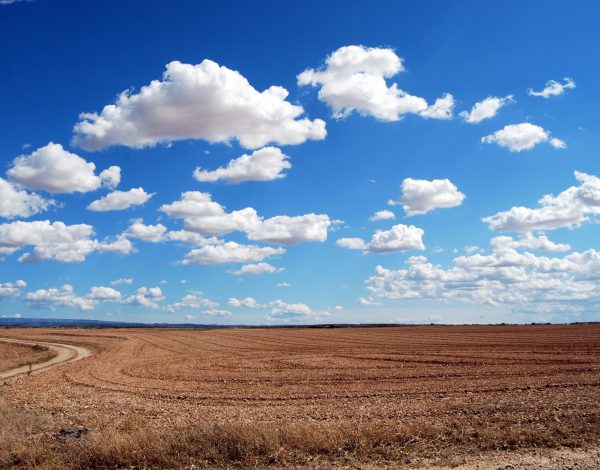Raw land development is speculative investment with various factors affecting the end outcome. It’s imperative to determine how you want to use the land before you start on the investment property purchase journey. Planning will allow you to identify which parcel of land is ideal for your situation. For example, if you’re purchasing investment property for blueberry farming, it may be important to consider the acidity, the soil, the amount of free-standing water, and many other factors before selecting the parcel for your development. The planning process will also allow you to identify how you’ll get real estate development financing. There are many ways including the traditional means of visiting your bank, but novel methods, including connecting with an investor through Finpedient, are available also.
Though investing in raw land can be lucrative, it’s challenging to hold onto land in periods of market declines, especially if you’re unable to generate income from the property. The purchase of raw land is considered a long-term and illiquid investment. It may take years before a property owner can create profits from the land and selling the land quickly is generally not a viable option.
Many risks are associated with the purchase of raw land for development which may include losing money on the resale. Unforeseen events, such as slowing economies or changing zoning can also affect the sale price.
Another problem that may arise is the risk of negative cash flow. Investors sometimes find that they owe more for the land than they can generate as income. Others plunge in head first, spending more than they can get in the resale. Therefore, it’s important point to note that raw land purchases are speculative investment properties.
Land Valuations
The valuation of raw land may be hard to determine although certain key factors remain constant. One example is a parcel that may seem like a great investment opportunity but suffers from developmental challenges due to the odd shape of the land. This means it’s important to carefully review the exact size, shape, width, and depth of the parcel you’re considering.
Location is the number one factor (besides the size) of property valuations. Lots with easy access to roads and parking can be ideal candidates for development. Access to sewers, drinking water, natural gas, electricity, and telephone service should also be considered when selecting the location of your raw land purchase.
Trees may add value to your land, as can streams. A stream on your property can increase its value by as much as 100 percent in some cases, but may also hinder development opportunities. It’s also been noted that properties in proximity to rivers, streams, and canals show a positive correlation to land values.
If your land parcel is close to a river or stream, do your homework to make sure it isn’t part of a flood plain. You’ll also want to check with the municipal government to ensure there aren’t any unknown moratoriums on the books that may impede the development of your land.
Drainage is also important to consider. If land has poor drainage, there may be limitations to the type of agriculture the land can be used for. Contour and grading are also factors to consider as highly sloped lands may increase the costs of development, especially if the property requires leveling before a potential development can commence. This can occur when you are trying to develop land for commercial purposes.
In some cases, highly-graded lands may lead you to pay upwards of 30% more for roads, utilities, water, sewer, and building foundations when you develop on a hill. This cost may be offset with the development of luxury properties which prefer high mountain views.
The zoning of your property may also be a significant component in valuations. Commercial, residential, and agricultural zoning can vary the property value greatly. For example, properties zoned for Agricultural Land Use (ALR) that are close to residential developments may be prime candidates for rezoning and are often held as speculative investments.
Environmental factors may also be important. Climate, air quality, water supply, and the presence of hazardous materials can help determine the worth of your raw land.
There are also cases where, although the land looks phenomenal, there may be hidden issues including toxic waste leaking in underground storage tanks, old infrastructure such as wells and septic systems, boulders, and other obstacles that could prevent you from starting on that new development, especially if you haven’t budgeted for such issues.
Ensure that the project you’re looking to develop has the necessities and a comfortable environment for its intended use. Smells from landfills may ruin your water park, noise from airports and traffic may compromise a good subdivision, and trash cluttering nearby lands may ruin the ambiance of a bed-and-breakfast getaway resort.
Other Considerations
The cost of your raw land purchase isn’t the same as the sale price you pay – the selling price is only a component.
It may be imperative to assess the potential yield you may get from the property. This requires factoring in additional fees such as property surveys, environmental impact studies, permits, engineering services, and soil testing.
If, after all your due diligence, the property you wish to develop is a sound investment, it’s time to secure the financing and line up investors. In general, lenders won’t give you more than 50% of the land’s purchase price, so it may be prudent to consider part-seller and part-bank financing.
Keep in mind that timing may be important to consider before diving head first into your development. As an example, don’t build an apartment complex in a market with surplus housing. There will always be other parcels of land available for development purposes. It may also be a good idea to get started in an economy that’s heating up instead of one that’s cooling down.


